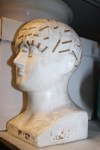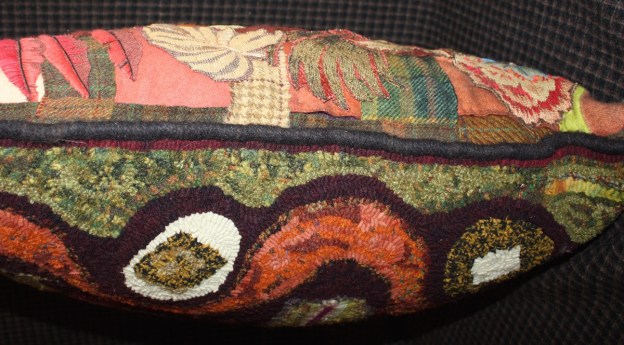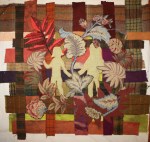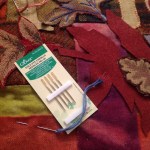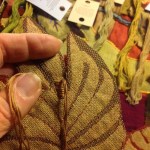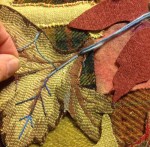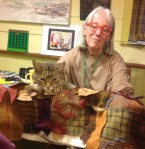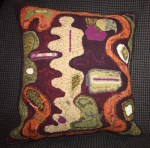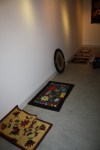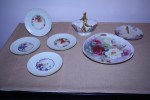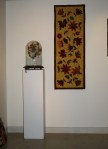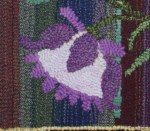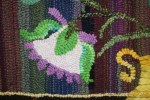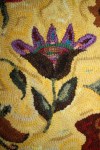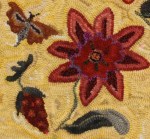Another opportunity to combine traditions at the Schwenkfelder Library and Heritage Center, Pennsburg, PA has resulted in Face Time: Portraits in Hooked Rugs and Selections from the Heritage Center Collection. The exhibit is up through March 17, 2018.
Susan Feller brought a variety of hooked work addressing the theme from self-portraits, friends, animals and a full group of church goers. Curator Candace Perry opened the archives and the two selected framed portraits of founders, animals, Halloween masks, frakturs, china phrenology heads and etched glasses all with faces. Come by to learn about traditions, history and leave with a smile on your FACE.
- Phrenology china bust
- majestic lion oil painting
- stuffed owl in collection
- PA artist local scene
- halloween masks
- pastural scene oil
Thank you to the artists who contributed their work:
An original design, Judy has studied and instructs how-to portray animals using rughooking. She is the author of Hooking Animals. Visit www.jcrugs.com.
Self portrait including motifs which tell about my life in West Virginia, our log home, the mountains, trees (a common motif), orange glasses and gray hair. Working in mixed media adds to the autobiographical design. Frame designed by Jim Lilly. Visit ArtWools.com
Mona was a good friend. Created to preserve our friendship, then she became ill. The rug was worked on during the months prior to her passing. Rug hooking is good therapy and creates memories.
This portrait of George Washington is traditionally hooked with strips of wool fabric cut in 3/8” strips. He read his Bible for one hour twice a day. Book available with first 44 “Hooking the Presidents”. Visit NolaHooks.com
A birthday celebration with my son in Maine. Value, contrast and shapes are important elements in my work. Visit RoslynLogsdon.net
My husband and I have had a llama farm since 1984. The portrait of CoCo Llama was a tribute to our herd matriarch. She represented everything we bred for in a well put together llama and also had the soul and temperament that we stove for in our breeding program. Visit LizMarinoRugHooking.com
Image is a serving man during the wedding of “the King of the World”. It was adapted from a Persian miniature of the Wedding Procession of Dara Shiloh.
The congregation of Fairfield Presbyterian Church, near Richmond, VA 1940 Sarah’s family is in this gathering. She is the blonde girl in red jumper at her mother’s knee on the right. The original photo included about 200 people, with artistic license, 75 are depicted here.
The Schwenkfelder is open Tuesday – Sunday and is located at 105 Seminary Street, Pennsburg, PA. Visit Schwenkfelder.com

